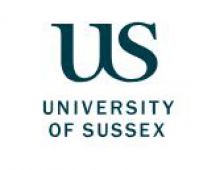It is difficult to be in UK higher education and be unaware of the black, Asian and minority ethnic (BAME) attainment gap. There have been numerous studies conducted, reports written and interventions trialled, yet it feels as though we are still decades away from closing it.
Many people still deny institutional responsibility, clinging to the “deficit model” that puts the blame squarely on BAME students’ perceived lower entry grades and poorer socio-economic circumstances. Thankfully, this is now widely recognised as false. Data from the Higher Education Statistics Agency and the Office for Students show that the gap exists even when grades and wealth are controlled for.
Only 7 per cent of students surveyed by the National Union of Students and Universities UK for their May report, Closing the Gap, attest that their university has discussed the attainment gap with the student body. Yet the report also highlights that some institutions have developed what they perceive to be appropriate interventions. These range from the “History Makers” touring exhibition, which celebrated black graduates of the University of Cambridge, to the University of Manchester’s focus on the “creation of safe spaces, where students and staff can engage in open dialogue on inclusive learning and teaching environments, academic support and well-being”.
While these interventions will undoubtedly have some positive effect, I fear that real progress eludes us because the onus is still placed on BAME students to work harder. They are often asked to spend hours in focus groups reliving traumatic experiences, or to attend extra sessions to help academics “decolonise” their curriculum. This raises an important question. Since we know that BAME students are not the problem, why are we asking them to do most of the work in solving it?
In my view, the sector is still not ready to face up to the real cause: whiteness. By that term, I mean the observable reality that UK higher education is set up to see a white population as the norm and everyone else as an added extra, who should either fit in or face restrictions on their attainment or progression.
If you don't believe me, look up your university’s leadership or google how many black professors it has. It is also important to remember that British academia has spearheaded several of the most dangerous rhetorical positions on race. An example is eugenics, assumed to have been consigned to a darker past until we learned that a secret eugenics conference was held on the UCL campus in 2017.
The facts are:
- The BAME attainment gap exists
- Out of 19,000 UK professors, less than 100 are black or mixed-race (of whom only 27 are women)
- BAME academics are paid less than their white counterparts
- BAME academics report feeling blocked from senior positions
- Only 1.2 per cent of the nearly 20,000 funded PhD studentships awarded by the UK research councils between 2016 and 2018 were awarded to black or mixed-race students.
These are not isolated phenomena. They are symptoms of whiteness, and the cure must be systematic change to universities’ approach to both teaching and non-academic services. In my opinion, the most effective interventions suggested in the Closing the Gap report are those that change systems directly, rather than solely relying on labour-intensive collaboration from BAME students.
The approach pioneered by Kingston University has been so effective that several other institutions have followed suit. It transforms the way that attainment gap data are analysed, basing them on BAME students’ academic potential, rather than their proximity to white attainment. The University of the Arts London’s “academic enhancement model” has also been effective. The university’s planning department and executive board collaboratively set and monitor cross-university standards using a variety of metrics, while offering support to courses that fall behind. The model contributed to a 4.9 per cent reduction in the university’s BAME attainment gap in 2018.
Surveys often find that BAME students are less likely to access support services. The reason is obvious to me: the services are not suitable for BAME students because cultural competencies are rarely considered when recruiting staff. Particularly in non-academic positions, cultural understanding must be seen as an asset; you cannot serve a diverse student population without a representative workforce.
My own university, Sussex, is far from alone in only just beginning its journey to close the attainment gap. Here, too, it is of paramount importance that we realise what the real issue and cause is; mining BAME students (often unpaid) for solutions to an institutional problem will only further exacerbate the differences in their university experiences.
While student collaboration is definitely important, universities must look in the mirror and address the perpetuation of whiteness as normality. They must make it an active priority to hire BAME staff in a systematic way that avoids tokenism. It is no longer enough to hold up a handful of BAME success stories as a shield from criticism.
Virtually every UK university claims to cherish equality, inclusion and fairness. Now is the time to prove it, with real investment to heal a self-inflicted wound.
Daniel Akinbosede is a doctoral tutor in biochemistry at the University of Sussex.
Register to continue
Why register?
- Registration is free and only takes a moment
- Once registered, you can read 3 articles a month
- Sign up for our newsletter
Subscribe
Or subscribe for unlimited access to:
- Unlimited access to news, views, insights & reviews
- Digital editions
- Digital access to THE’s university and college rankings analysis
Already registered or a current subscriber?










